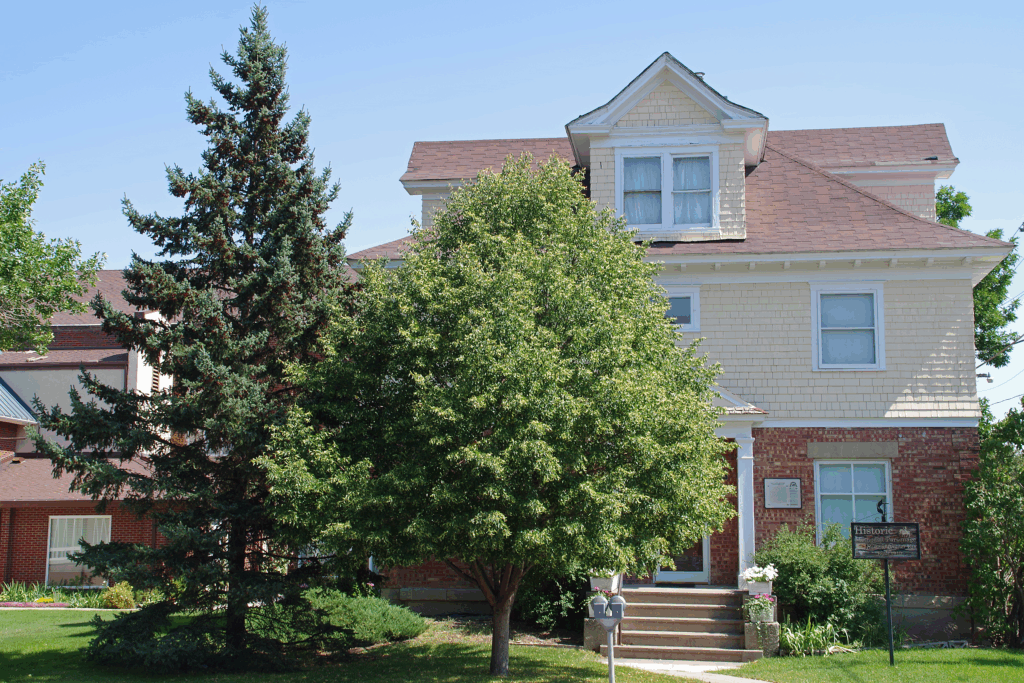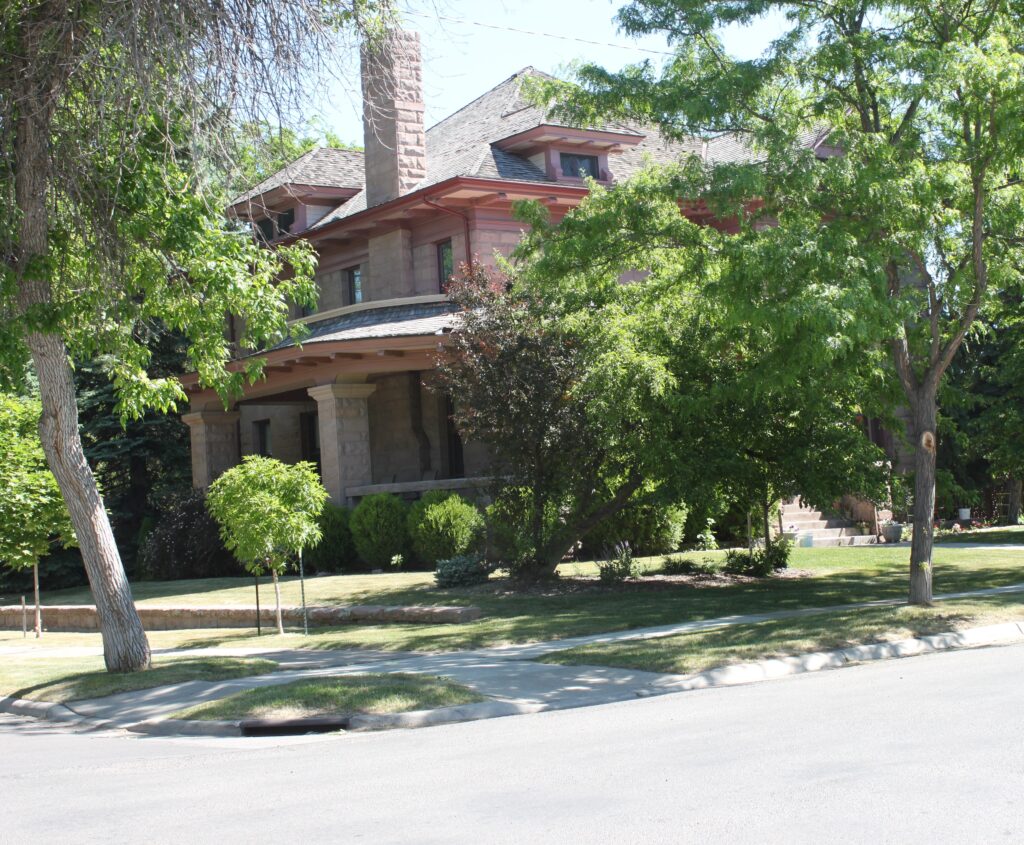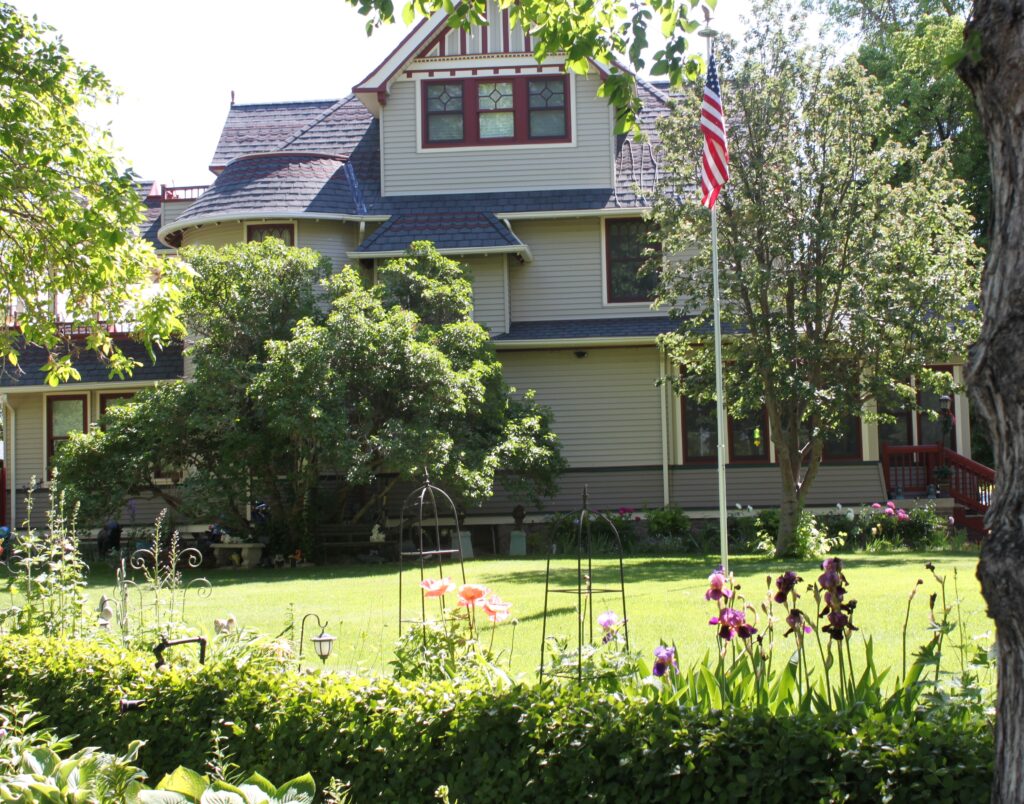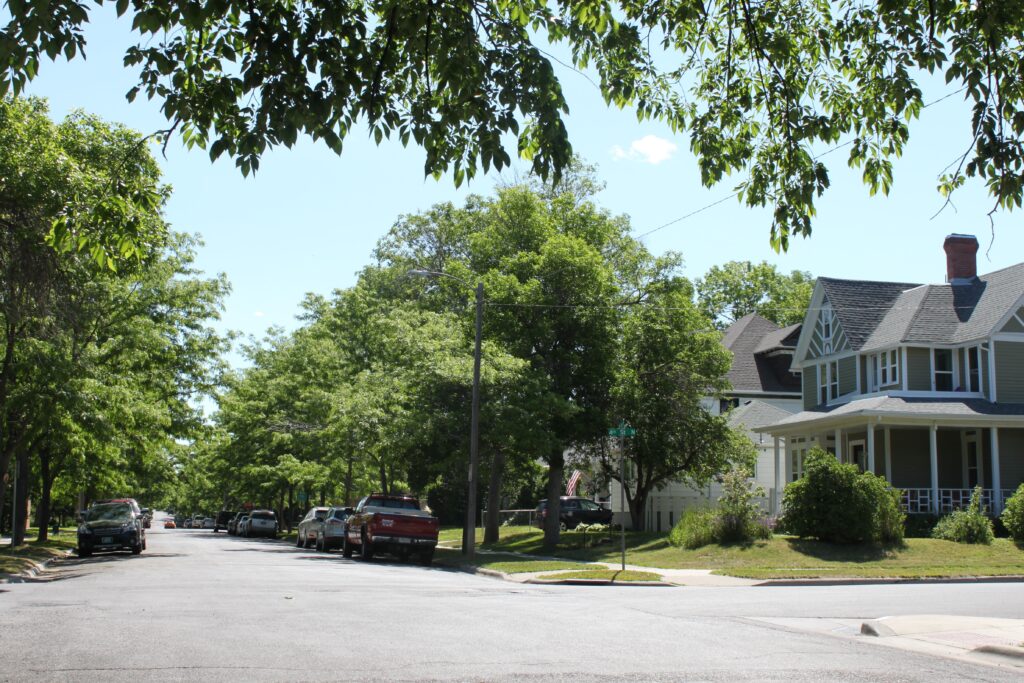
Stroll among the trees in the evening ‘s dappled light on Thursday, June 19, from 5:30 – 7 p.m. with Montana historians, Channing Hartelius and Suzanne Waring, as guides. Starting on the sidewalk at 113 Sixth Street North, you will meet the guides who will lead you through the northside neighborhood where you will learn about the pioneers who built the grand homes located there.
The lower northside neighborhood district, which is listed on the National Registry of Historic Places, is composed of homes that were built mainly between 1890 and 1920, and many have maintained their original appearance. The architectural styles are a compilation of Bungalow, Prairie, Colonial, Revival, Queen Anne, Victorian, and Second Empire.
Paris Gibson, founder of Great Falls, wanted the town laid out in a Cartesian grid like that of Minneapolis, Minnesota, the city where he had lived before coming to Montana. Having grown up in Maine, Gibson also wanted trees in his city, first cottonwood and box elders and later elms, ash, and maple. From the very beginning, the boulevards were planted with trees. A city nursery was developed along the river, and Gibson himself would often be seen watering the trees being cared for there.
Gibson, along with J. J. Hill—the railroad magnet—and another Minneapolis business man, started the Great Falls Water Power and Townsite Company (GFWPTC) beginning with surveying the land within the original townsite. He wanted families to come to Great Falls, so when churches petitioned the GFWPTC for land, it was given to them as a gift. Several religious denominations are still located within the district with a history that goes back to the inception of the community. Since the city lots were being sold by the GFWPTC, Gibson controlled which residents could buy parcels on the lower northside, and he picked those who would build prestigious homes.
Examples of homes you will see from the sidewalk include Paris Gibson’s home where he lived the last years of his life. Other early pioneers who were neighbors were Lee Ford (and later Charles and Sue Bovey, restorers of Nevada City); Dr. Larson, co-founder the Great Falls Clinic; Ed Cooney, editor and part owner of the Great Falls Leader; A. B. Guthrie, winner of the Pulitzer Prize for writing The Way West; and Dr. Adams whose medical office was in the home near Gibson Park, among others.
Both Hartelius and Waring have served on the Great Falls City/Cascade County Historical Preservation Advisory Commission. Hartelius owns and shows the C. M. Russell Honeymoon Cottage in Cascade, and Waring writes articles about Montana pioneers for regional periodicals.
The tour will end with returning to the Brother Van House Museum just in time for a glass of lemonade and a tour of the interior of this historical home. Proceeds of $10 for each adult will go toward the maintenance of the Brother Van House Museum. Parking is available behind the First United Methodist Church. Please call 406-453-3114 M-Th from 10 a.m.- 2 p.m. to register. Last-minute attendees are also invited, but numbers are limited so that everyone can hear.






